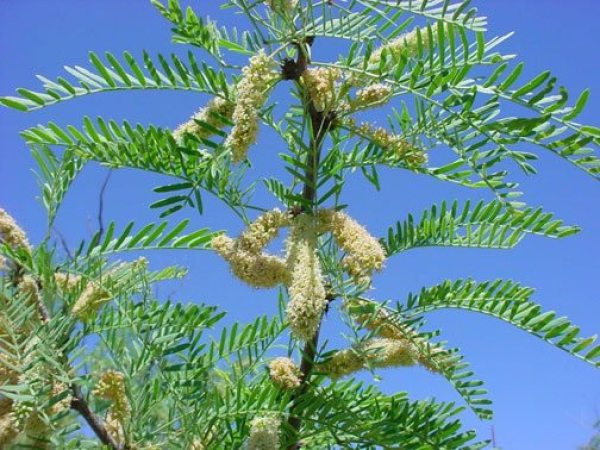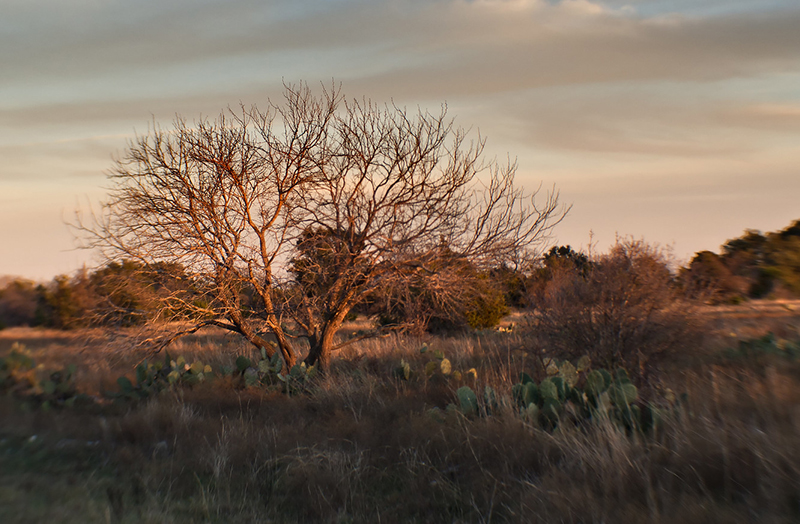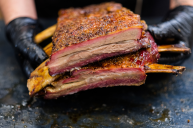Growing up in South Texas I knew to avoid the short scrubby velvet mesquite trees that grew on the undeveloped land behind my house. Short and squatty, covered in thorns, they bloom with a yellow flower each spring and drop long mesquite seed pods every fall. They are not attractive. The mesquite leaves are fern-like in appearance and sparse, not lush or shady. The sharp, thorny trees have a bad reputation among landowners in the Lone Star State, but they really don't deserve it.
Mesquite trees, at least the honey mesquites that are prevalent in the Lone Star State, are really "trees" in name only. Mesquites (or Prosopis glandulosa if we're taking Honey Mesquite) are actually from the legume family that is native to the southwestern United States and Mexico. According to Florida State University, the bean pods they bear don't split open when ripe, which allows the seeds to be distributed by wildlife that eats them. In Texas, cows unwittingly transported mesquite trees on long cattle drives by eating the bean pods.

Mesquite Trees are difficult plants to remove. Image via Florida State University
Widely considered to be trash trees, it's standard practice for landowners to cut down this plant species on their property and burn them. Mesquite roots can grow close to 200 feet underground and regenerate if the tree is chopped down making them pesky trees to remove. However, they have several uses that shouldn't be overlooked. The taproots are popular choices for firewood.
They replace the nutrients in the soil
According to Victoria County Master Gardeners, species of mesquite are nitrogen-rich plants, so leaving them on your land rather than cutting them down (if you're able to successfully battle their ruthless root system) and burning them can improve the nutrient content of your soil.
Mesquite trees tend to be short and scrubby like a bush, but that's usually because cutting them down causes them to grow back in all directions. However, if you prune them properly they will grow a central trunk and get taller and more tree-like.
Telling a Texan to prune a mesquite tree is akin to advising someone to wash their garbage before they throw it out. Sure, some people really do it, but most people will just laugh at you. However, if you want to reenergize overgrazed soil by giving it an extra food source, mesquite trees are a good way to do that. Pruning them will make them look a tad better (hopefully).
You can sell the mesquite wood to restaurants
Most people know that mesquite is a great wood to smoke meat. In fact, barbecue restaurants in the northern U.S. and Canada have it shipped in specifically for that purpose.
Texans may scoff at the folly of spending money to have mesquite wood shipped internationally, but a Texan pit master admitted to using a truckload of mesquite per week at his business. If you have a surplus of Mesquites, you could sell the wood to restauranteurs.
They can be made into furniture, mesquite flour and maybe even fuel
Those who view mesquite trees as a short, scrubby bush may be surprised to learn that artisan carpenters have been turning mesquite wood into high-end furniture for many years.
Some folks grind up the beans from mesquite pods for use as a flour alternative. People who have tried it say the flour has a sweet, almost caramel-like taste to it. (I wonder what cookies made of mesquite beans tastes like?)
Texas A&M AgriLife has been studying the possibility of turning unwanted mesquite wood into ethanol fuel since 2006.
So the next time you see a squatty, thorny mesquite tree, appreciate the many ways mesquite trees can actually be useful instead of cursing it and lamenting how much water it drinks.




